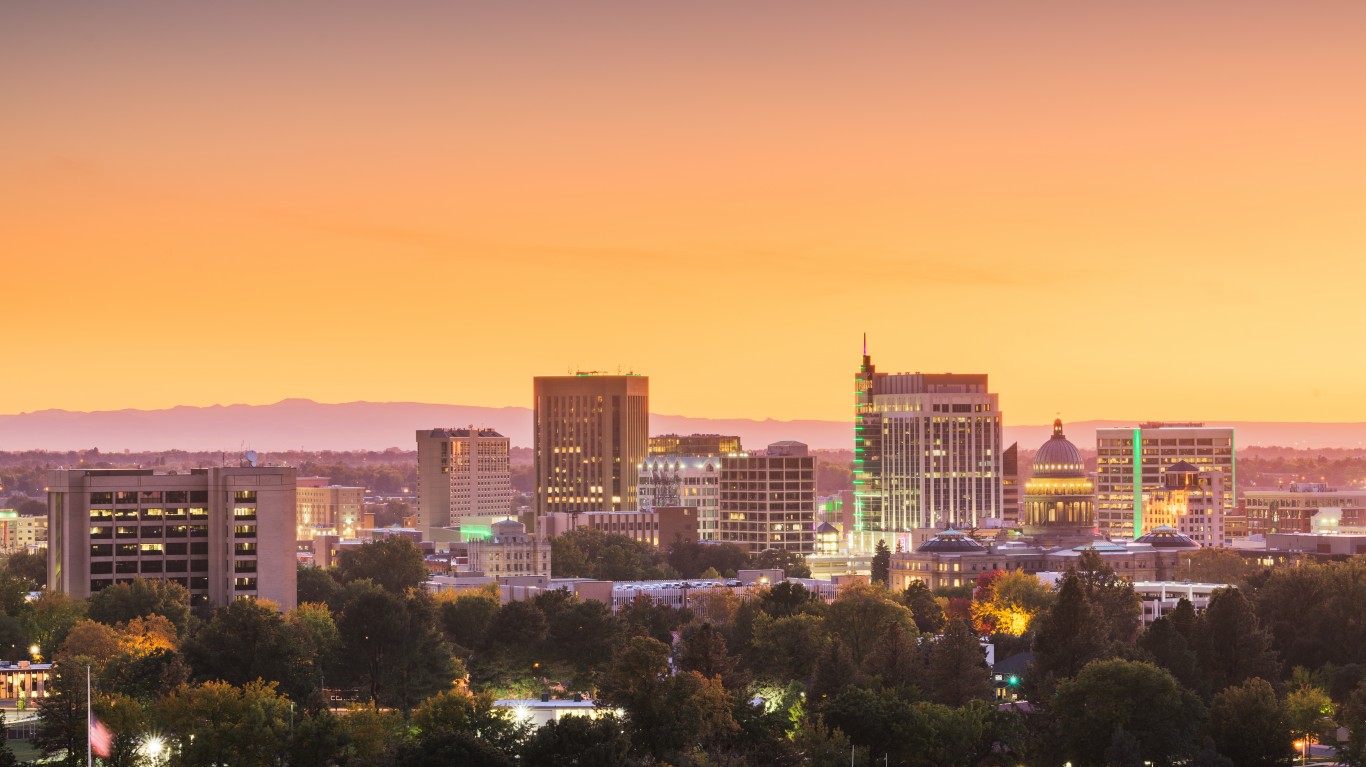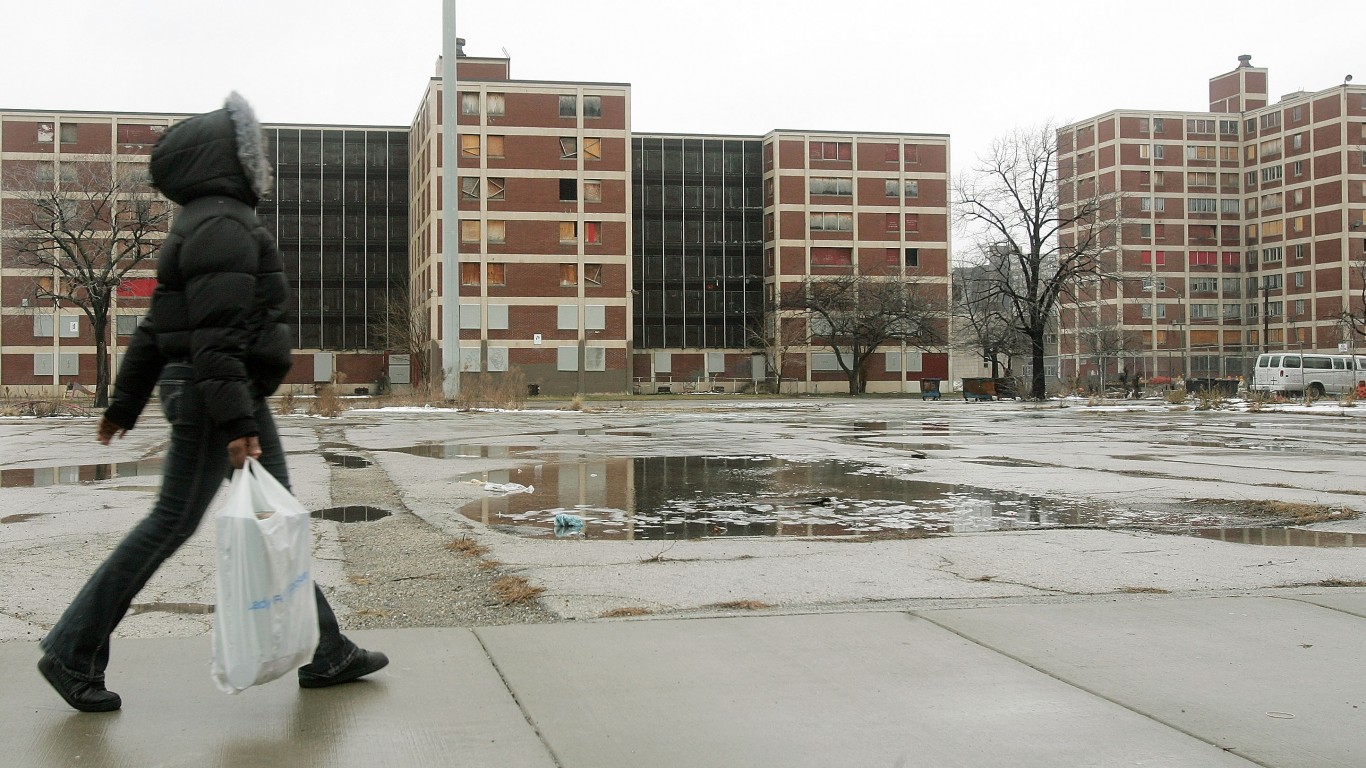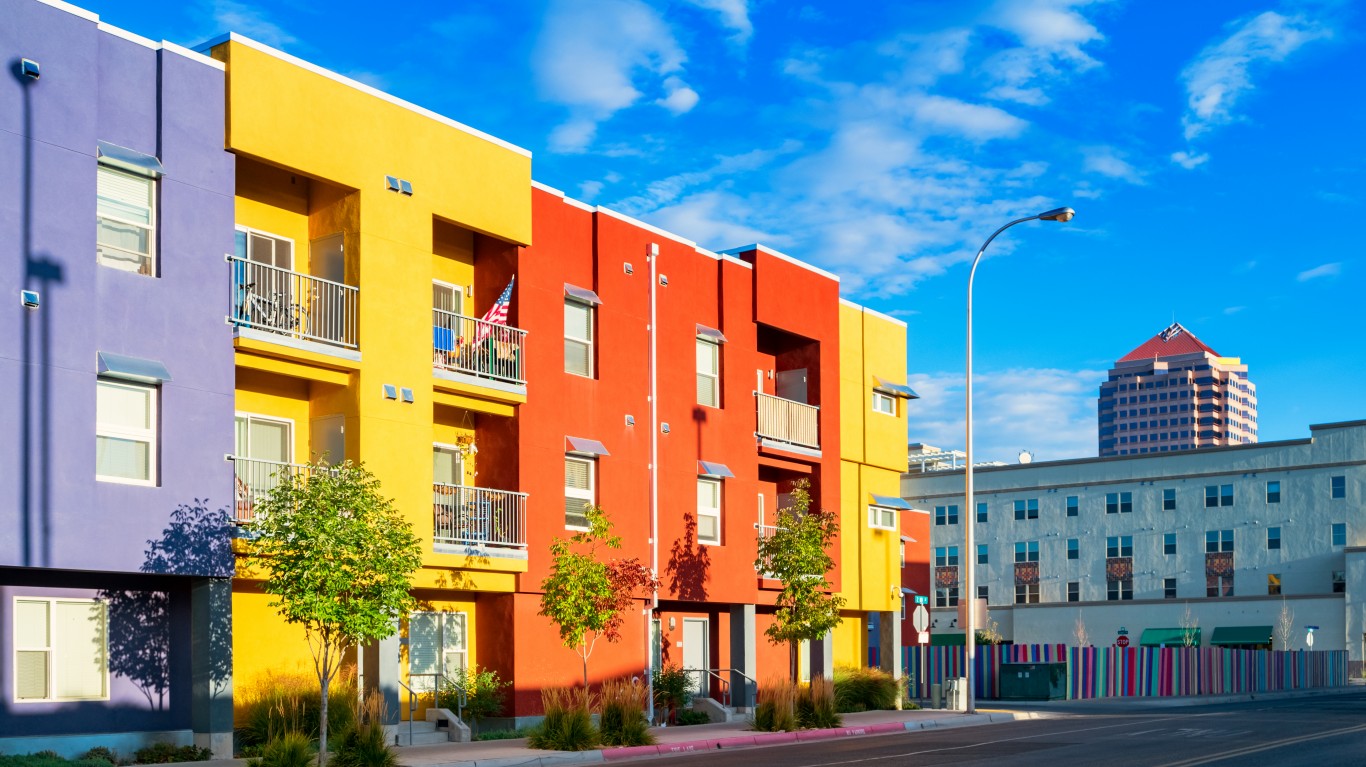Population and Social Characteristics
States Where the Most People Live Alone

Published:

There were nearly 130 million households living in the United States in 2022, and of those, 37.1 million, or 28.6%, were one-person households — people living alone. If we consider the entire adult population (that is, civilian and noninstitutionalized), we find that 14% were living alone.
It is worth remembering that living alone does not necessarily mean being lonely or not being in a relationship. Still, there are stages in life where more people tend to live alone, including before raising a family and later in life. Indeed, about 40% of one-person households are those 65 years and older. With that said, let’s find which are the loneliest states.
To find the states where the most people live alone, 24/7 Wall St. used Census Bureau data, ranking the states by the share of nonfamily households living alone out of all households. We also added the share of people living alone as a percentage of the civilian, noninstitutionalized 16+ population. All data, including monthly gross rent and bachelor’s degree attainment rate, came from the 2022 American Community Survey and are estimates for that year.
In only one state less than one-in-five households live alone. Considering Utah’s younger population, this is likely not surprising. In the next two states, Idaho and California, the share jumps to 24.3%, or nearly one-in-four households. The share increases slowly until it reaches 33% in North Dakota — meaning that one-in-three households in the state live alone. New Mexico and South Dakota are not far behind. In fact, in 22 states, 30% of households are single-person residences. (For those enjoying solitude, also see: The Single Most Secluded Spot in Every US State.)
Finally, while not ranked on the list, the District of Columbia deserves a mention. The nation’s capital has been dubbed “the loneliest city,” as nearly half of all households live alone, or nearly 30% of the civilian adult population — that’s double the national average.


















































Retirement planning doesn’t have to feel overwhelming. The key is finding expert guidance—and SmartAsset’s simple quiz makes it easier than ever for you to connect with a vetted financial advisor.
Here’s how it works:
Why wait? Start building the retirement you’ve always dreamed of. Click here to get started today!
Thank you for reading! Have some feedback for us?
Contact the 24/7 Wall St. editorial team.